White Oak Rat Snakes, commonly just called Oak Snakes locally, are residents of north Florida. These reptiles can also be found in extreme southern Georgia. The lighter coloring of the Oak Snake differentiates them from the common Grey Rat Snake. Oak Snakes are well adapted to climbing trees and most commonly feed on squirrels, rats, birds, lizards, and eggs. The color pattern blends in well with the bark of oak trees, and when lying still in a tree the snakes seem to be just another tree branch. They will lie motionless on a tree branch and strike at any edible looking creatures that might come in range of them. They may slowly stalk their food too, moving very carefully to get within striking distance without alerting the prey.
The White Oak Rat Snake is not poisonous. They catch their prey by striking, biting, and holding, then wrap themselves around the captured animal. The snake squeezes the captured animal until it is dead and then starts to consume it whole, usually beginning at the head. The snakes can swallow animals much larger than themselves by stretching around them and slowly crushing them as they are swallowed. If bitten by an oak snake, you should get treatment. Even though the snake is non-poisonous, there is still a danger of infection. Oak Snakes are not normally aggressive, but will bite if they are bothered.
Adult snakes are normally about 4 to 6 feet long. They live any place where trees are abundant and there is an adequate food source. The snakes can also be found in barns or other outdoor buildings where they catch mice. Although Oak Snakes might catch young chickens or eat eggs, they are normally beneficial and should not be killed. Normal life span in the wild is probably around 12 years, but some snakes have lived over 20 years in captivity. In the wild these snakes are preyed upon by hawks, owls, and other snakes. Being cold blooded, the snakes go into a state known as brumation during the colder times in their native habitat. Brumation is not true hibernation, but a milder form in which the reptiles slow all their body processes and reduce food intake. They become very lethargic during periods of brumation and find a hiding place that is somewhat insulated from the cold. They might sleep in old brush piles or under leaves for long periods of time during the winter months when food is scarce and temperatures are lower.
The following series of pictures was taken in Suwannee County, Florida where the snake was observed catching and devouring a young rabbit. The snake appeared to be about 6 feet long, but was not actually measured. It took approximately 30 minutes for the snake to kill the rabbit and completely devour it. The snake went on its way after eating the rabbit. It would be looking for a place to hide while the meal was being digested.
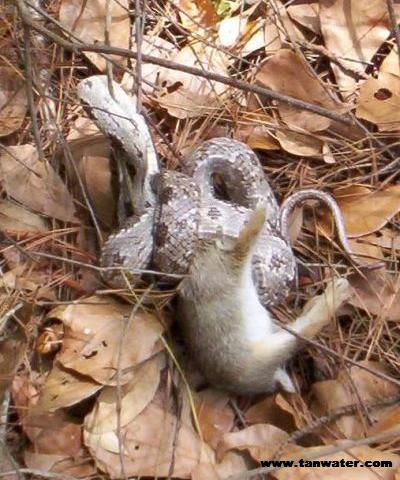
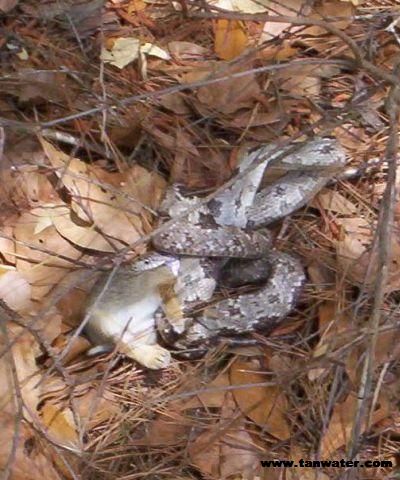
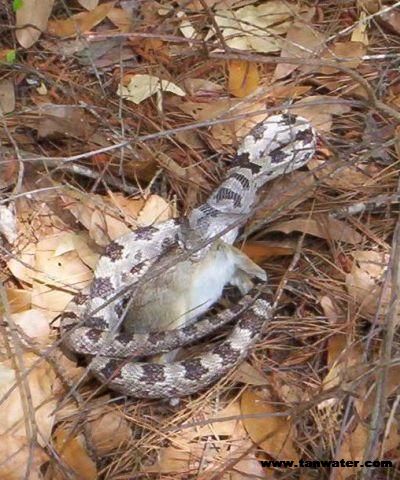
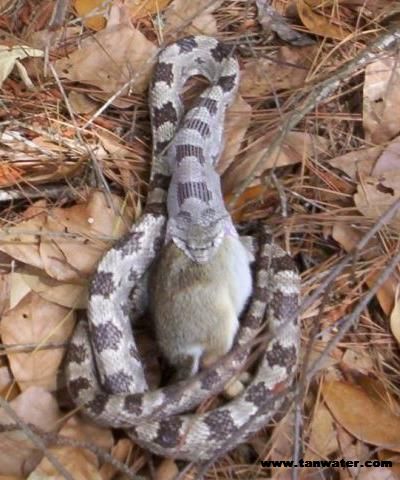
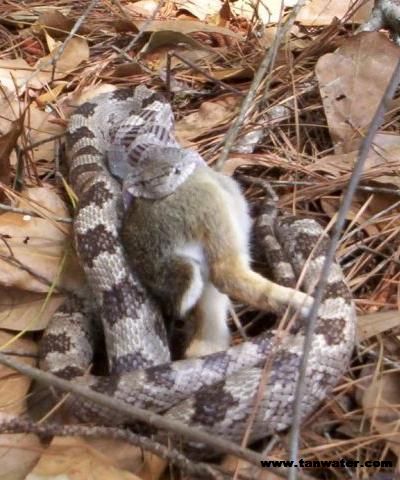
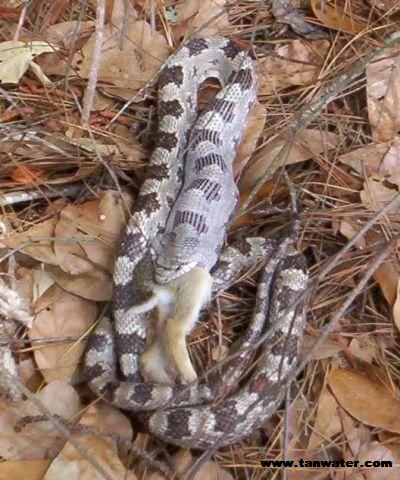

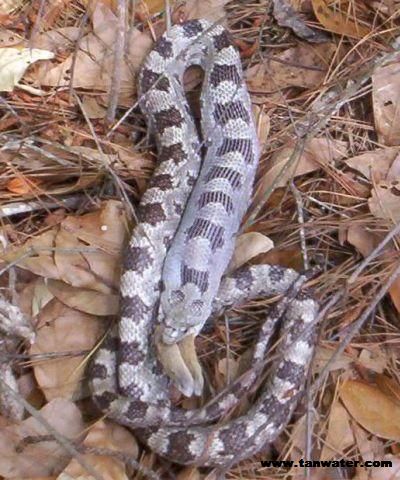
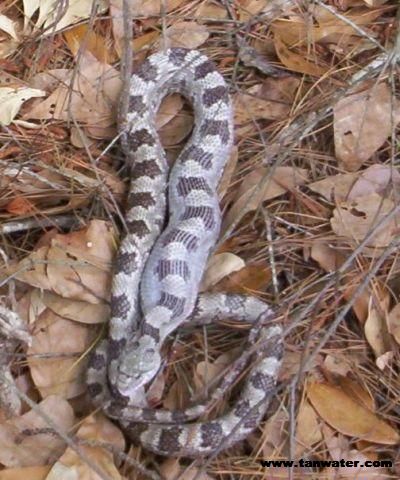

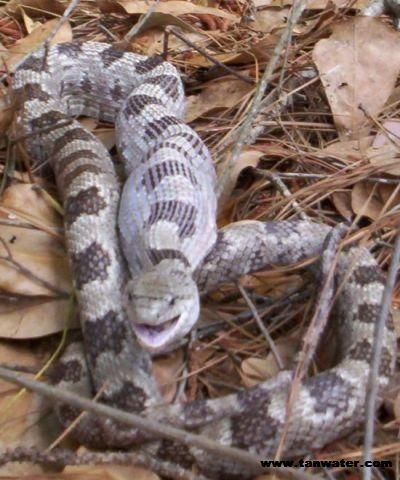
Graywolf / 2007 / Edited by Riki

